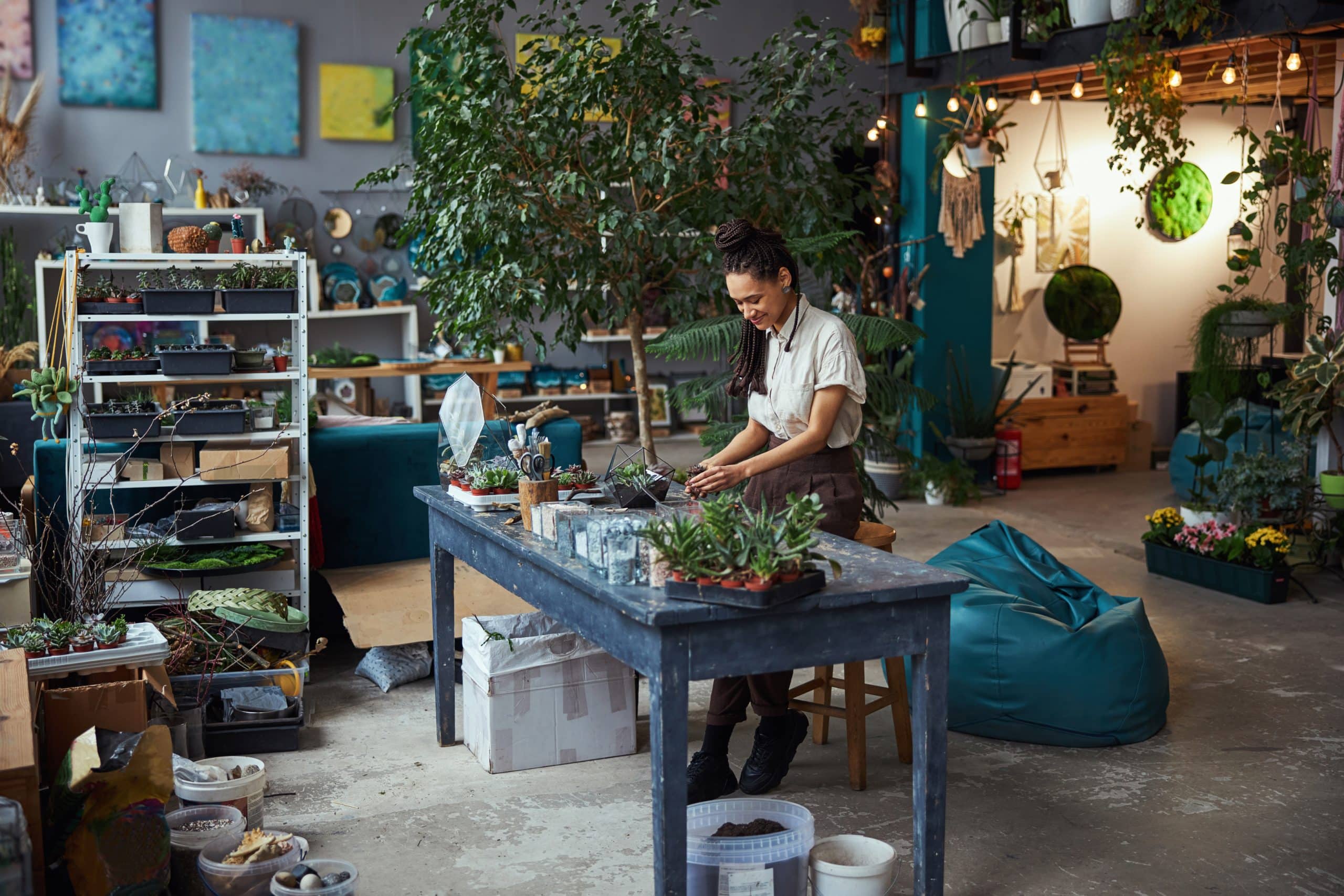It is not an overstatement to say that succulents have started to rule the world of indoor gardening. Their effortless elegance, vast array of colors, and ability to survive in harsh conditions make them an ideal choice for plant lovers. They can instantly transform the look and feel of a space and require minimal effort in terms of their care.
Selecting the right succulent is the first step towards creating an aesthetic indoor garden. With this guide, you’ll learn about the different types of succulents, their specific needs in terms of light, watering, soil, and pot size, and how to arrange them in your indoor space. This article aims to equip you with the best practices for succulent selection, care, planting, and maintenance.
In the same genre : What’s the Best Way to Craft a Handmade Potting Bench for a Green Thumb’s Urban Balcony?
Choosing the Right Succulents
When it comes to choosing the right succulents, there are several factors to consider. The plant’s mature size, the amount of light it needs, the color of its leaves, and the type of soil it prefers are all aspects to take into account when deciding which succulent to purchase.
Some popular indoor succulents include the Snake Plant (Sansevieria), known for its striking tall leaves, the Jade Plant (Crassula ovata), with its glossy, fleshy leaves, and the Zebra Plant (Haworthia), recognized by its white stripe detailing. These plants prefer indirect light, making them ideal for indoor conditions.
Also to discover : What’s the Ideal Method for Creating a Hidden Bookcase Door in a Home Office?
The Sunset Aloe (Aloe dorotheae) and Echeveria, with its rosette formation, require more light, and therefore, you will need to place them near a window that receives plenty of sun.
Understanding Your Succulent’s Needs
Like any plant, succulents have specific requirements regarding light, water, and soil. Generally, succulents need a well-draining soil to avoid root rot, a common issue with these plants. A soil mix specifically designed for cactuses and succulents is often the best choice.
In terms of light, most succulents prefer bright but indirect sun. They can tolerate direct sunlight for a few hours every day, but too much direct sun can cause their leaves to scorch.
Watering your succulents properly is crucial. They prefer a ‘soak and dry’ method, requiring the soil to be thoroughly drenched and then left to dry out completely before the next watering. This watering schedule emulates the natural desert conditions where most succulents originate from.
Preparing the Right Container
The type of container you choose plays a significant role in the health of your succulent. The pot should have a drainage hole to prevent water from accumulating at the bottom and causing root rot. The material of the pot also matters. Both ceramic and terracotta pots are great options as they allow the soil to dry out completely between watering.
The size of the pot is another aspect to consider. Select a pot that is just slightly larger than the succulent. This will ensure that the root system has enough room to grow without being swamped in too much soil, which can retain water and cause the roots to rot.
Arranging Your Succulents
Arranging your succulents is where you can let your creativity shine. You may choose to arrange them by color, size, or plant type – there is no wrong way to do it as long as you cater to their specific needs.
Grouping succulents that have similar light and watering needs together makes care easier. You can create a visually appealing arrangement by mixing different shapes, sizes, and colors. Place taller succulents in the back of your arrangement and smaller ones in the front. You can also add a touch of drama by incorporating a cascading succulent that spills over the edge of the container.
A Low-Maintenance Indoor Garden
One of the many reasons why succulents are popular is their low-maintenance nature. They do not require much water, can survive in less-than-ideal light conditions, and generally do not need frequent repotting.
To keep your succulents thriving, make sure to check their leaves regularly. If they are becoming soft or discolored, this could be an indication of overwatering. On the other hand, wrinkled or shriveled leaves can be a sign of underwatering.
Always remember that each succulent is unique and will have its own specific care needs. Some may need more light than others, while some may prefer more or less water. It’s important to monitor your plants and adjust your care routine as needed.
In a nutshell, selecting the right succulents, understanding their needs, preparing the right container, and arranging them in an aesthetic manner can help you create a stunning, low-maintenance indoor garden that will grow and thrive with minimal effort.
Proper Maintenance of Your Indoor Succulent Garden
Maintaining your indoor succulent garden requires a basic understanding of their needs and a bit of regular attention. Despite being low-maintenance, succulents still need some care to thrive indoors.
One of the key factors in maintaining your indoor succulent garden is watering. As stated before, succulents prefer the ‘soak and dry’ method – thoroughly drench the soil and then let it dry out completely before watering again. This cycle replicates their natural desert environment.
The frequency of watering really depends on the succulent type, the size of the pot, the potting mix used, and the environment. In terms of frequency, watering once every 1-2 weeks is usually sufficient. However, if you notice the leaves looking shriveled or wrinkled, this could be a sign of underwatering. Conversely, if the leaves become soft, discolored, or start falling off easily, your succulent could be overwatered.
Lighting is another crucial factor for your indoor succulent garden. Although most succulents can tolerate low light, they do best in bright, indirect light. Too much direct sun exposure can cause the leaves to scorch, while too little light can cause the plants to stretch and become leggy.
You may have to move your succulents around your home to find the best lighting. South or east-facing windows usually provide the best light for succulents. If you lack natural light in your home, you could consider using an LED grow light as a supplement.
Finally, while succulents do not require frequent repotting, it may be necessary if the plant has outgrown its pot or if the potting soil has depleted nutrients. When repotting, it’s important to use a fresh potting mix and ensure the new pot has plenty of drainage holes.
Conclusion: Revel in Your Stunning, Low-Maintenance Indoor Succulent Garden
Indoor gardening with succulents is a delightful endeavor that rewards you with stunning aesthetics and a calming environment. By choosing the right succulents, understanding their needs, and giving them proper care, you can create an indoor oasis that not only pleases the eye but also purifies the air.
Remember, the best aspect of an indoor succulent garden is its low maintenance nature. With just a bit of attention to watering, light, and occasional repotting, these hardy plants can thrive and bring greenery into your home for a long time.
Your indoor garden is more than just an arrangement of plants. It’s a testament to your love for nature, your artistic expression, and your commitment to nurturing life. So, take the time to enjoy your succulents. After all, they are not just plants. They are living, breathing pieces of art that add charm and character to your indoor space.
Whether you are an experienced plant lover or just starting out, succulents offer an excellent way to foster your green thumb. So why wait? Your journey to a stunning, low-maintenance indoor succulent garden starts now. Enjoy the process, learn from the experience, and most importantly, have fun along the way!











